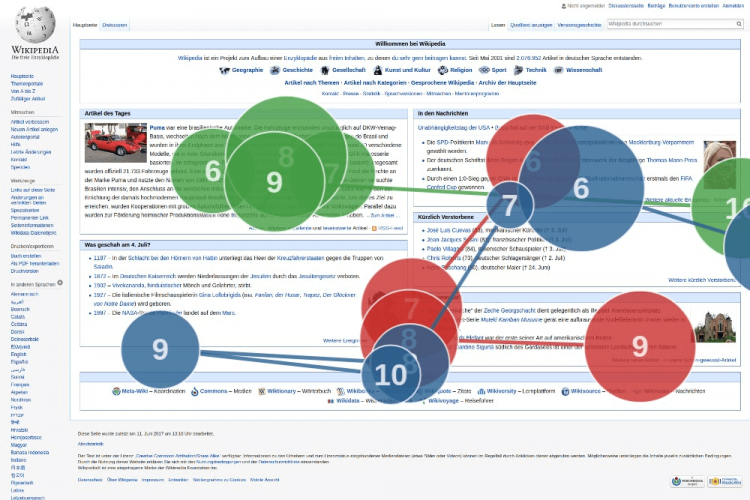User Testing
Contents
Definition
User testing is a process in which real users test the functionality of a website, app, product or service. During a process of user testing, the company’s intended customers will form the group performing the tests and providing the evaluation.
That way, the company can improve the website so that it better fits the requirements of their target market. This will ensure that their offerings provide a greater user experience (UX), and so it is likely that this will generate more sales.
The intended customers will test the website - seeking to specify its strengths, weaknesses and any potential areas for improvement that they would recommend - and then provide their findings to the company who created the website or app.
The benefits of user testing include the ability to harness feedback directly from the company’s targeted market themselves, and the chance to evolve the site in a way that ensures a better UX.
Furthermore, this type of testing also presents the opportunity to make alterations to the site’s design that may have not been spotted before. This is because it involves external individuals (who have not been involved in the site’s creation and are not a part of your company) in the testing.
The steps required for user testing
Due to the uniqueness of a company, each site or app will have an inherently unique process of user testing. This process is designed to be adapted and modified to best suit the requirements of a particular site.
However, the typical steps required for a process of user testing are as follows.
1. Outline your goals
The goals that you wish to achieve through the process of user testing should be specific to this particular project. If it is an upgrade of an existing site (for example, a remodelled page of your website) your goal may be to create an app or website which offers an improved UX.
These goals will act as the basis behind the decisions that you make later on in the testing process.
2. Select your testing method and prepare a prototype
Decide when, where and how the user testing will take place. In addition, you will need to have an accurate prototype of your app or site prepared for the testers to use. We will cover the different metrics that can be used in a process of user testing in more detail below.
3. Recruit the individuals who will undertake the user testing
This requires you to clearly understand who your target market is. These should be real people who fit into your target market. The group should also be balanced, and include a diverse group of individuals.
You may wish to create client personas at this stage, to help you select the right users to take part in the testing of your website.
4. Perform the test
This could be taken in a moderated or unmoderated setting. In a moderated test, the test will take place in a lab or professional setting, and a moderator will be present throughout. If the user testing is unmoderated, the testing session should be recorded for the assessor to watch later, alongside a written record of the user group’s feedback.
5. Collect the results of the test and analyze the findings
Assess the findings of this test, and decide which changes you would like to make to the site as a result. Consider how you can improve the UX of your site based on these results.
Metrics for user testing
You could measure the results of your user testing process in a number of different ways.
Some of these methods of measurement are quantitative, some are qualitative. These metrics include:
- Accessing user feedback through surveys
- Using software to measure eye tracking - for tests which evaluate new websites or online content
- Using software to track mouse movements - for tests which evaluate new websites or online content
- Accessing feedback through the discussions of a focus group
- Using A/B testing and finding out the preferences of the group on a variety of features
- Using the system usability scale
- Using a heuristic evaluation
- Listing the problems that the users have identified
- Measuring the learnability
- A competitive comparison against an existing app or site
- Identifying any gaps in your software

Example of gaze plot eye tracking on Wikimedia
What is the difference between user testing and usability testing?
Usability testing is a common type of user testing, but the two terms are often incorrectly spoken of as interchangeable methods. Both tests get feedback directly from the users, but they differ in the type of user experience that they are attempting to assess. The focus behind user testing is to assess the behaviors of your customers and their responses to the site and its design. This method of assessment covers the wide variety of different responses (including both emotional and behavioural ones) that your customers can have to your site.
Usability testing instead focuses on the way in which a customer uses the site. This user purpose - and how well a user can achieve it with your app or website - is the area which this type of testing aims to assess. It tests the functionality of your site’s design from the perspective of your customers.
As a result of this more specific focus on elements like functionality and ease of use, usability testing does not measure the UX of your app or website in all of its forms.
Related links
- https://www.searchenginejournal.com/beyond-traditional-user-intent-go-granular/391557/
- https://moz.com/blog/12-creative-design-elements-inspiring-the-next-generation-of-ux
- https://blog.hubspot.com/agency/12-ways-to-improve-user-experience
Similar articles
| About the author |
 |